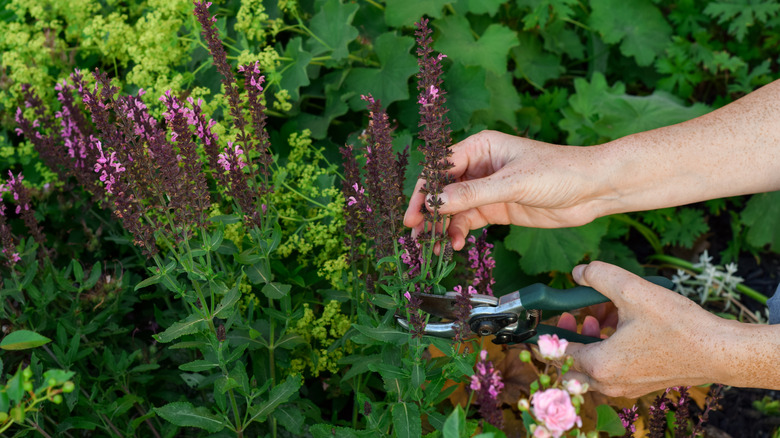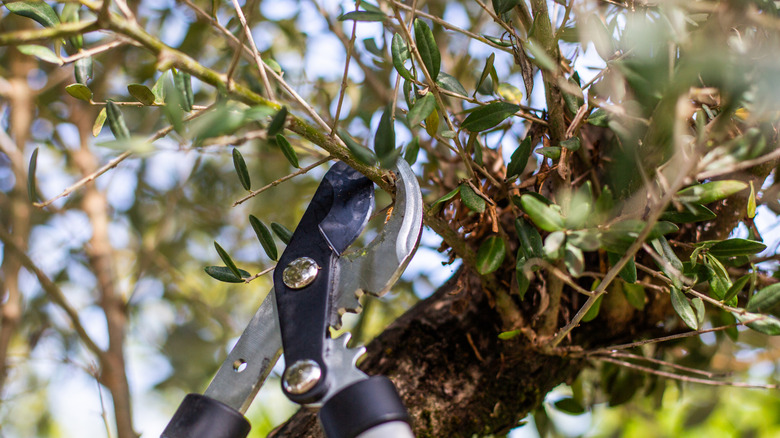The Sunlight Tip To Keep In Mind When Pruning Your Plants
There are many reasons you may want to consider pruning or trimming your plants — and yes, there's a difference. At a glance, pruning can be a great way to boost visual appeal. You can add personal flair to your plants and elevate your yard's overall appearance. However, this important garden chore goes beyond what meets the eye: it can also be a beneficial way of improving your plants' health. By removing dead or damaged branches, you can help foster healthy growth, leading to a thriving garden. Not all pruning methods are the same, so it's essential to choose the right one for each type of plant.
While there are various factors to keep in mind while pruning, one of the top things to consider is sunlight. This is especially true for larger bushes or trees that create canopies, blocking the lower levels of your yard from sunlight. Your plant needs adequate sunlight and air flow, not just to survive but also to reduce the likelihood of any fungal infections or diseases. So the next time you pick up your shears, keep sunlight in mind to ensure your pruning promotes healthy light exposure.
How to prune your plants for optimal sunlight
Think about the shape of your tree and how the sunlight reaches the leaves. If the top branches of your tree grow too tall or full, they can reduce the amount of sunlight that reaches the bottom portions of your tree. Over time, without pruning the crown of your tree or larger plant, this reduced sunlight can harm your plant. When pruning your plants, you want to consider ways to bring more sunlight into your garden — and thus to your low-level plants.
Essentially, what this means is that you want the tops of your plants to be trimmed thinner, narrower, or shorter compared to the bottom. When done with care, this ensures that your plant remains balanced in appearance without introducing low-light conditions that may lead to negative effects. If you've worked with trees in the past, you may recognize this process as crown thinning or reduction. Making a plan before you start trimming can help you prune your plants like a pro.
Before you set out on trying this method on the plants in your yard, you'll want to make sure you have the right tools on hand. Larger plants may need larger shears, but regardless of size, it's essential to use clean tools. This can help reduce the spread of disease. You'll also want to research the specific plant you're working on to avoid common pruning mistakes. Some require specific techniques, while others may need to be pruned during a certain time of the year.

